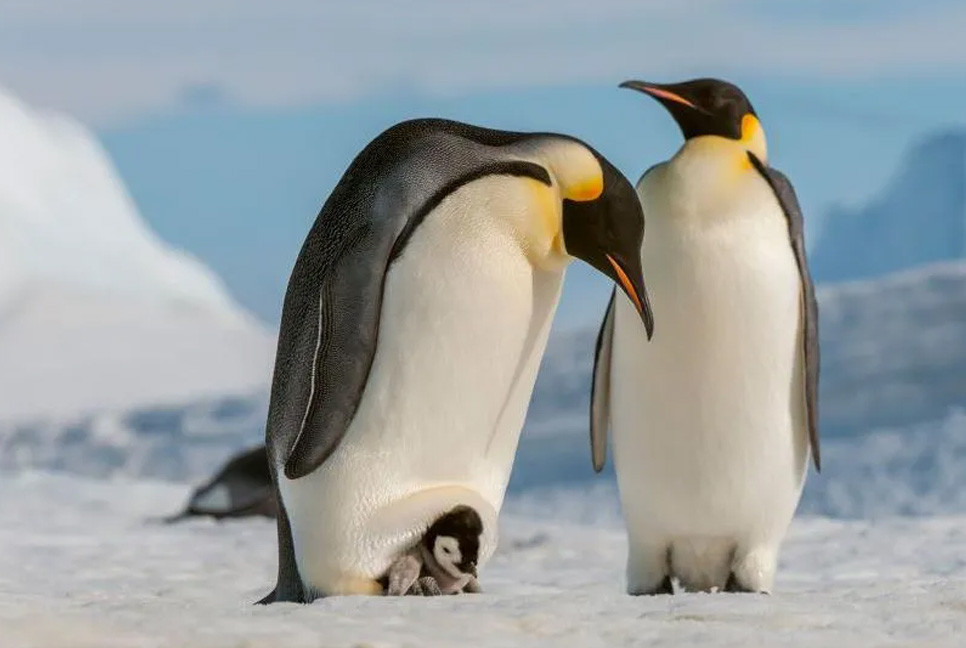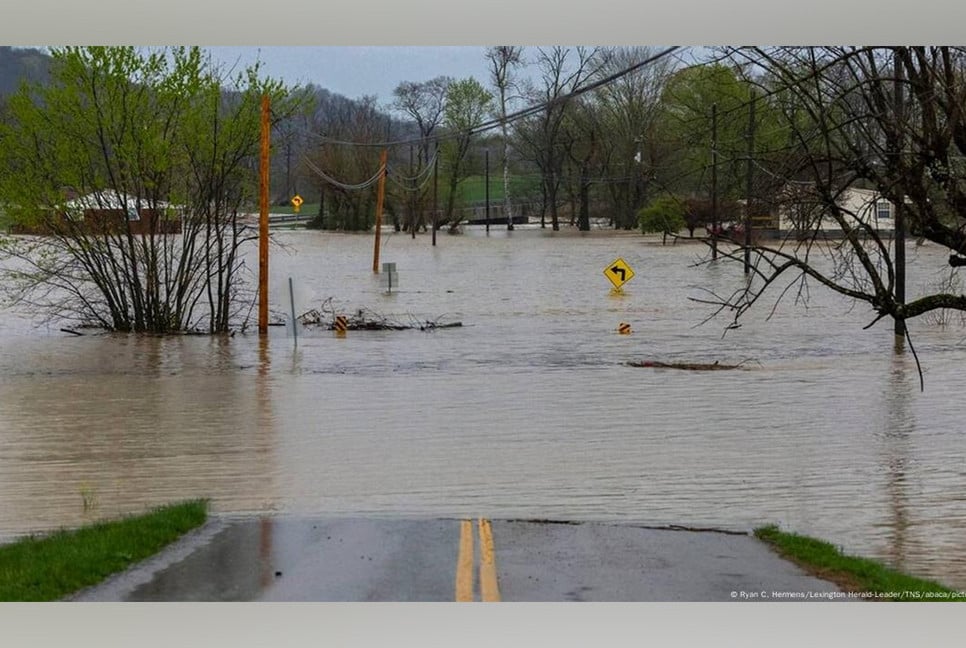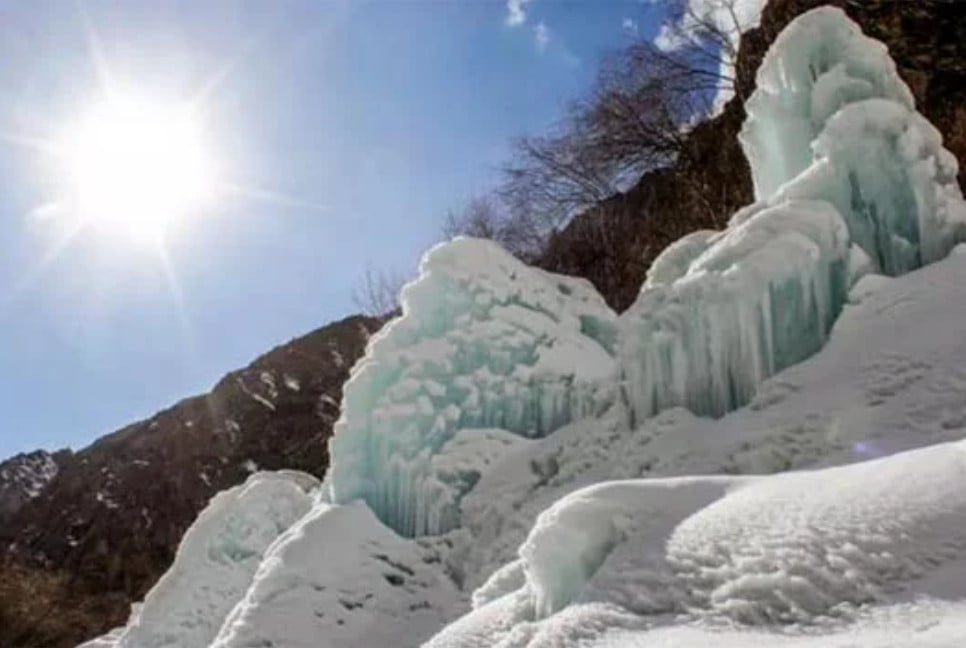Satellite data shows record-low ice in the world's frozen oceans, which help cool the planet, reports BBC.
Sea ice reflects sunlight, but as it shrinks due to rising temperatures, the darker ocean absorbs more heat, accelerating warming.
A mix of warm air, seas, and winds has driven sea-ice to a record low.
As of February 13, Arctic and Antarctic ice covered 15.76 million sq km, breaking the previous 2023 record.
Arctic ice is at its smallest for this time of year, while Antarctic ice nears a record low. Arctic ice decline is well-established, shrinking from 7 million sq km in the 1980s to 4.5 million in the 2010s. Antarctic ice, once resilient, has only recently begun to shrink.
Since then, Antarctica has shown a series of very low sea-ice extents, although there are still lots of natural variability.
"Every year, every data point that we get suggests that this isn't a temporary shift, but something more permanent, like what we've seen in the Arctic," Walter Meier, senior research scientist at NSIDC, told BBC News.
"It is indicating that the Antarctic has moved into a new regime of lower ice extents."
Antarctic sea-ice is relatively thin and mobile - being surrounded by ocean rather than continents like the Arctic - so it can be particularly sensitive to winds breaking up the ice.
But warmer air and warmer waters look to have played a key role in this latest 2025 low, towards the end of the southern hemisphere summer.
The Antarctic ice-shelves – ice flowing off the Antarctic continent, rather than sea-ice – appear to have had a particularly extreme season of surface melting, driven by high air temperatures.
"Atmospheric conditions in December and January looked like they were strongly promoting surface melting on the ice-shelves," said Tom Bracegirdle, research scientist at the British Antarctic Survey.
"That could also have contributed to what we've seen in Antarctic sea-ice, and ongoing ocean warming is setting the backdrop to all of this as well."
Antarctica's record sea-ice low of 2023 would have been a one-in-2,000 year event without climate change, according to a recent study. Yet 2025 is not far from eclipsing it.
At the other end of the planet, the Arctic should be reaching its annual maximum, with cold winter temperatures helping the oceans to freeze over.
But current sea-ice extent is nearly 0.2 million sq km below anything previously recorded for the time of year, and has been tracking very low since late 2024.
This is partly as a result of a late freeze-up of ice around Hudson Bay, with unusually warm ocean waters taking a long time to cool down.
As well as warmer seas, some storms also disrupted ice around the Barents and Bering Seas, with the consequences likely amplified by long-term reductions in sea-ice thickness.
"A thinner ice cover is more responsive to weather [… so] weather events can have a stronger impact than they used to," said Julienne Stroeve, professor of polar observation and modelling at University College London.
In recent weeks, Arctic sea-ice has moved even further below average. Temperatures around the north pole were about 20C above normal in early February, leading to melting conditions in places like Svalbard.
This "is quite astonishing" for the time of year, according to Dr Bracegirdle.
This very low winter extent doesn't necessarily mean the Arctic will end up with record conditions throughout 2025, as conditions can change quickly at the poles.
But, with the Arctic warming nearly four times faster than the global average, declines over the coming decades are almost inevitable.
The Arctic is expected to be essentially free of sea-ice at the end of its summer at least once before 2050, according to the UN's Intergovernmental Panel on Climate Change. Some recent studies suggest it could happen sooner.
Declining sea-ice at both poles not only has implications for local wildlife like polar bears and penguins, but also the Earth's climate.
Polar sea-ice has already lost around 14% of its natural cooling effect since the early-to-mid 1980s, as the area of bright, reflective ice has declined, according to a study published last year.
"If you significantly change the sea ice distribution in and around Antarctica, you modify that part of the planet which is actually helping us fight against climate change," said Simon Josey, a professor at the National Oceanography Centre.
Sea-ice also plays an important role in the great ocean conveyor, the mass movement of water that helps distribute heat around the planet and keeps places like the UK and north-west Europe relatively mild.
"If we see another strong winter loss [of Antarctic sea-ice], people are going to start to worry about what it's doing to the ocean circulation," said Prof Josey.
Bd-Pratidin English/ AM


































































